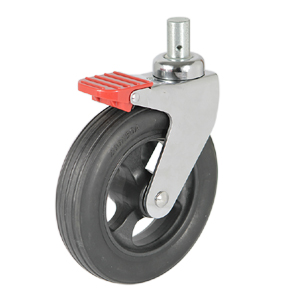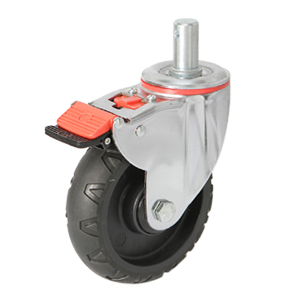In the fast-paced world of emergency medical services (EMS), the efficiency and reliability of equipment can make a life-saving difference. Among the many crucial components that ensure smooth operations in EMS scenarios, ambulance stretcher caster wheels play a pivotal role. These wheels have evolved significantly over the years, driven by advancements in materials, design, and technology, aiming to enhance mobility, safety, and comfort for both patients and medical personnel.
Importance of Ambulance Stretcher Caster Wheels
Ambulance stretchers are the primary means of transporting patients safely from accident scenes to medical facilities. The caster wheels mounted on these stretchers are critical as they facilitate smooth movement across various surfaces and through tight spaces such as hospital corridors and emergency room entrances. Historically, stretcher wheels were simple and utilitarian, often lacking the robustness needed for modern EMS demands. However, the evolution of ambulance stretcher caster wheels has transformed them into sophisticated components that meet stringent requirements of durability, maneuverability, and patient care.
Evolutionary Journey of Emergency Stretcher Caster Wheels
1. Material Advancements
Early ambulance stretcher caster wheels were typically made from basic metals or plastics, offering limited durability and functionality. With technological advancements, materials such as high-strength polymers, lightweight metals, and advanced composites have become standard. These materials provide increased durability and load-bearing capacity, ensuring the wheels can withstand the rigors of EMS operations.
2. Design Innovations
Design improvements have focused on enhancing the performance and usability of ambulance stretcher caster wheels. Modern designs incorporate features like swivel mechanisms for improved maneuverability, integrated braking systems for secure stationary positioning, and ergonomic handles for ease of use. These enhancements not only aid in smoother patient transfers but also reduce physical strain on EMS personnel, particularly during critical and time-sensitive situations.
3. Safety Enhancements
Safety is paramount in emergency medical transport. Advanced ambulance stretcher caster wheels are engineered to provide stability and control, even on uneven terrain. Sophisticated locking mechanisms prevent unintended movement, significantly reducing the risk of accidents and injuries during patient transport. These safety features are crucial for ensuring the well-being of both patients and medical responders throughout the transport process.
Technological Integration and Future Directions
Looking ahead, the integration of cutting-edge technologies into ambulance stretcher caster wheels holds promise for further advancements. Researchers are exploring smart wheel systems equipped with sensors to monitor wheel performance, weight distribution, and environmental conditions. Predictive maintenance capabilities are also being developed to anticipate and address potential issues before they affect operational efficiency.
Practical Applications and Benefits
In practical terms, the evolution of ambulance stretcher caster wheels translates into tangible benefits for emergency responders and healthcare facilities alike. Enhanced mobility and maneuverability enable quicker response times and smoother patient transfers, crucial for optimizing patient outcomes. Hospitals appreciate the reliability and ease of use of modern stretcher wheels, which contribute to streamlined workflows and improved overall efficiency in patient care.
Ambulance stretcher caster wheels represent a cornerstone of modern emergency medical transport systems. From humble beginnings to advanced, high-tech solutions, these wheels have undergone a remarkable evolution. Their journey reflects a commitment to enhancing the safety, efficiency, and effectiveness of EMS operations worldwide. As technology continues to evolve, ambulance stretcher caster wheels will undoubtedly continue to play a crucial role in shaping the future of emergency medical services, ensuring that patients receive the highest standard of care during critical moments.
In summary, the evolution of ambulance stretcher caster wheels stands as a testament to innovation in emergency medical transport, driving improvements that benefit patients, caregivers, and healthcare systems globally.
Our 6 inch and 8 inch stretcher casters adopt reinforce PP hub + TPE tread, With precision ball bearing, Durable and low noise .






Comments
Post a Comment